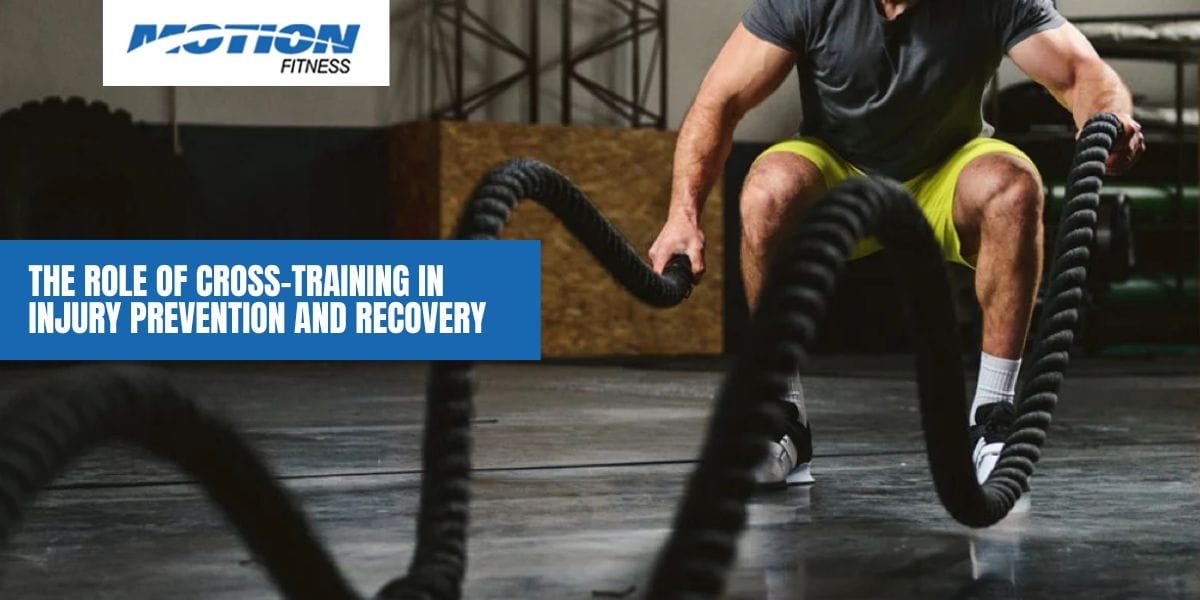
When it comes to building a sustainable fitness routine, cross-training emerges as a powerful tool. Are you an athlete striving to increase performance or someone looking to stay injury-free? Picking cross-training is a well-rounded approach to physical fitness.
To find the best of the benefits of cross training, its role in injury prevention and recovery, and how to integrate it effectively into your workout regime, this submission will help you through. Let’s understand in detail the role of cross-training for injury prevention and recovery!
Understanding Cross-Training
At its core, cross-training for injury prevention involves engaging in different types of workouts to improve overall fitness. Instead of sticking to a single activity, cross-training allows variety by adding exercises that complement your primary sport or fitness goal. For example, a runner might add swimming or cycling to balance the strain on their joints while maintaining cardiovascular health.
How Does Cross-Training Prevent Injuries?
One of the benefits of cross training workout routines is its ability to reduce the risk of injuries.
How?
- Balanced Muscle Development: Focusing solely on one activity can lead to overuse injuries and imbalances in muscle strength. Cross-training promotes balanced muscle development by engaging different muscle groups.
- Reducing Overuse Injuries: Overuse injuries often occur when repetitive movements strain the same muscles and joints. Cross-training for injury prevention workout routines like yoga, swimming, or cycling relieve overworked areas while improving fitness.
- Improved Flexibility: Cross training for flexibility, such as practicing Pilates or stretching routines, improves the range of motion and reduces stiffness, lowering the likelihood of muscle strains.
The Recovery Benefits of Cross-Training
Cross-training isn’t just about prevention. It plays a pivotal role in recovery, too.
- Active Recovery: Low-intensity cross-training exercises like walking, swimming, or yoga can help reduce muscle soreness and improve circulation, speeding up recovery.
- Mental Refreshment: Recovery exercises through cross-training provide a change of pace. This mental break from repetitive workouts increases motivation and reduces burnout.
- Rehabilitation Support: After an injury, cross-training helps rebuild strength and endurance without overloading the injured area. For example, someone recovering from a knee injury can use cross training equipment like elliptical machines for low-impact cardio.
Choosing the Right Cross-Training Equipment
Selecting the right equipment can amplify the benefits of cross-training for injury prevention. Some must-haves for your workout:
- Gym Equipment for Versatility: Machines like elliptical trainers, rowing machines, and treadmills provide low-impact cardio options for cross-training.
- Interactive Fitness Equipment: Advanced tools such as virtual cycling bikes and interactive fitness equipment provide an engaging experience, blending technology with fitness.
- Cross Trainer for Home Gym: A cross trainer for home gym is a versatile addition to your home gym. It targets multiple muscle groups while being joint-friendly.
Effective Cross-Training Workouts for Injury Prevention and Recovery
1. Low-Impact Cardio
- Activities: Cycling, swimming, elliptical training.
- Benefit: Improves cardiovascular fitness while reducing stress on joints.
2. Strength Training
- Activities: Weightlifting, resistance band workouts.
- Benefit: Builds muscle strength and increases joint stability.
3. Flexibility and Balance
- Activities: Yoga, Pilates, stretching routines.
- Benefit: Increases range of motion and improves balance.
4. Rehabilitation-Specific Exercises
- Activities: Water aerobics, light walking, or stationary cycling.
- Benefit: Helps rebuild strength post-injury without strain.
Cross-Training Tips for Flexibility and Recovery
- Listen to Your Body: Pay attention to signs of fatigue or discomfort and adjust your workouts accordingly.
- Stay Consistent: Aim for 2-23 cross-training sessions weekly to see consistent improvements.
- Add Variety: Mix activities to keep your workouts exciting and well-rounded.
- Set Goals: Define clear goals for your cross-training sessions, whether they are for improving endurance, flexibility, or strength.
Best Cardio Machines for Cross-Training
Investing in the best cardio machines for a home gym setup allows practical cross-training sessions. Some popular options:
- Rowing Machines: Engage your upper body and core while providing a full-body workout.
- Elliptical Machines: Perfect for low-impact cardio, these machines mimic the motion of running without the strain.
- Treadmills with Incline: Add variety to your runs and strengthen different muscle groups.
Why Cross-Training is Essential for Every Fitness Enthusiast?
If you’re a beginner or an experienced athlete, cross-training helps you achieve a holistic approach to fitness. It prevents injuries and delivers longevity in your fitness journey by adding variety, improving recovery, and increasing mental focus.
Final Thoughts
Cross-training for injury prevention and recovery is more than just a fitness trend. It is a comprehensive strategy to increase overall health and performance. You can unlock your full potential while minimizing setbacks by integrating versatile gym equipment, interactive fitness tools, and varied workout routines.
Leap cross-training today with Motion Fitness—protect your body, increase your performance, and recover smarter!




